- Home
- Encyclopedia
- Bombardier Conservationist: Tom Bell and The Hi...
Bombardier Conservationist: Tom Bell and the High Country News
In 1973 in Lander, Wyo., a father faced a difficult choice: Buy rubber boots to get his daughter through the Wyoming snows? Or continue pouring family funds into his newspaper and its quixotic mission—saving Wyoming? High Country News Publisher and Editor Tom Bell must have chosen the boots.
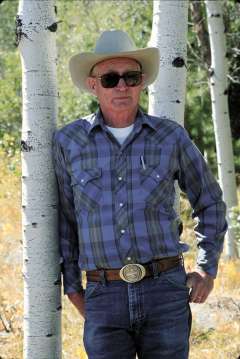
Bell announced in the March 2, 1973 edition that he was closing the newspaper, which he had launched just four years earlier. His wife, Tommie, and he had put $30,000 into its operation; he had drawn a salary in 1971 and 1972 that totaled only $910.97, he said. He had three little children at home, all adopted. He still owed $7,500 on a bank note from when the paper was first launched. He said he had few regrets about giving up.
High Country News still lives, however, 43 years later. After the 1973 announcement, pledges and commitments flooded in; readers sent in small checks and appealed to their philanthropic friends. In the July 6, 1973, issue, he announced a “miracle”: They had received $29,467.75, and he paid off the bank loan.
Why did this small newspaper with only 2,608 subscribers inspire such a dramatic response? When asked to remember those days, Wyomingites told Wyohistory.org that they credit both the man and the significance of the threats the region faced at that time.
The threats
The most significant threat was coal development. In earlier decades, most of the coal was mined underground in Wyoming, but by the early 1970s, huge strip mines were being proposed along with power plants and synthetic fuel plants that would transform the rural region into what Bell and his supporters saw as an industrialized colony. Some called it a National Sacrifice Area. The North Central Power Study, a joint government-industry effort published in 1971, predicted construction of 42 power plants on the Northern Plains. While the six major Western coal states would produce only 9,000 megawatts of coal-fired electricity in 1972, the study predicted that the northern states would produce five times that much by 1980 and 200,000 megawatts per year by the year 2020.
Government and industry looked to the Northern Plains to solve the nation’s energy crisis and proposed ambitious projects. Near Pinedale, Wyo., the Atomic Energy Commission wanted to use 100 nuclear bombs underground to frack tight shale beds to release natural gas. Along the Green River in southwestern Wyoming, developers proposed diverting water across the Continental Divide to feed the giant coal-fired power plants. Another plan called for tapping precious groundwater and mixing it into a coal slurry that would be shipped to Arkansas.
At the same time, ranchers were shooting and poisoning hundreds of eagles to protect their livestock. Pronghorns were suffering slow deaths, tangled in illegal barbed-wire fences on public lands in the Red Desert, fences that also excluded the public from those lands. The Forest Service was allowing huge, 1,000-acre clear cuts of timber that denuded hillsides, filled rivers with topsoil and could not be sustained.
The High Country News covered all of these issues, and despite its small circulation, enjoyed an outsized influence. Reading about the North Central Power Study in HCN, the editor of Science News called Bell to confirm what he read: The numbers could not be right. When Bell referred him to the study itself, the editor ran a front page story on it. Wyoming’s lone congressman, U.S. Rep. Teno Roncalio, was on a first-name basis not only with Bell but also with his office manager, Mary Margaret Davis.
Dick Prouty, environmental reporter for the Denver Post, recognized early the importance of the High Country News when the big energy companies began quoting it. “They respected the reporting there, and we all started using it for ideas,” Prouty said. The paper’s “miracle” was covered by the Los Angeles Times. Audubon magazine sent historian Alvin Josephy to investigate the threats and ran his in-depth analysis of the North Central Power Study, “Agony of the Northern Plains,” in its July 1, 1973, issue.
The man
Tom Bell was born in Wyoming, and so was the High Country News. Their indigenous roots served them well in an era when ranchers and mining interests tried to tie the fledgling environmental movement to outsiders. No one could question Bell’s credentials. He didn’t just wear jeans, cowboy boots and a cowboy hat. He hunted, lived on a ranch—until he had to sell it to save the newspaper—trapped and, when he was a student at the University of Wyoming after World War II, started the rodeo club there. His father was a coal miner.
Tom had staked uranium claims with his fellow teachers, later selling the uranium stock to subsidize HCN. It was his passion, however, that ignited a movement in Wyoming. Small in stature, he seemed to have a gargantuan presence.
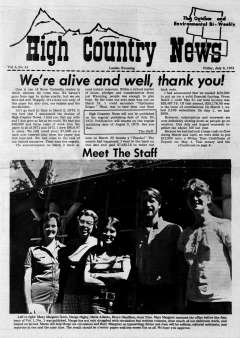
Many people shared his desire to save Wyoming, but the Northern Plains had no environmental movement in the 1960s, only isolated organizations with differing priorities and no paid staff. In 1967 Bell started the Wyoming Outdoor Coordinating Council, now called the Wyoming Outdoor Council.
Though he did not intend to start an environmental newspaper, Bell needed a forum for sharing news among the groups in the WOCC and their members. As it turned out, Camping News Weekly was closing. Bell took out a loan in 1969 to purchase the publication and in 1974 transformed it into the High Country News. Realizing that he could not continue to run both WOCC and HCN, he convinced the WOCC board to take out a loan and hire Keith Becker.
There was no business plan for High Country News, but practicality was never high on Tom’s list of priorities or that of his wife, Tommie. By then he had quit several different jobs, one after he told a member of the Wyoming Game and Fish Commission to go to hell. He was very clear about his priorities in 1970: “I view conservation not just as a job nor as an avocation but as a way of life and a means to survival for the human race. It is a deadly serious business in which a person must be willing to sacrifice, personally as well as economically.”
The vision
Bell provided three things: well-researched information, a vision of how to tackle the problems and often the nudge to get people to work. With the exception of The Denver Post and the Missoulian in Montana, there were no other reporters focusing on environmental issues in the region at the time. The Casper Star-Tribune of the early 1970s focused instead on discrediting the environmentalists, according to Bruce Hamilton, who later joined Bell as an editor at HCN.
“He was a catalyst for me, constantly on your case to do something. He was a buzz bomb of dedication and tenacity,” Leslie Petersen says. Petersen’s parents, Les and Alice Shoemaker, owned a dude ranch near Dubois, Wyo. The Shoemakers were alarmed about the clearcutting in the Shoshone National Forest around them and worked to protect the DuNoir area in particular, losing friends in the process in a community dependent upon the timber mill. Petersen’s father served as the second president of the WOCC Board, and she learned about broader environmental issues when she attended meetings with him and read High Country News.
Bell conveyed his vision in a letter to Wyoming Gov. Stan Hathaway in 1972, pleading for a special session of the Legislature to deal with “impending social, economic and environmental problems.” The letter suggested specific legislative initiatives.
Hathaway, however, rejected Bell’s vision, saying the energy plans did not seem imminent. Bell never forgave him and often in the High Country News, vented his wrath against Hathaway, U.S. Sen. Cliff Hansen, and other individuals who, he thought, imperiled wildlife and the state’s future.
Bell was perceived as “someone to be reckoned with, someone who knew his stuff and would not back off,” Petersen says.
“No one could threaten him. He was absolutely fearless and confrontational. He acted as if he had nothing to lose,” according to Keith Becker, who worked side by side with Bell when the WOCC and HCN shared an office. Bell was more incendiary in print than in person. “Tom was so earnest that he was able to disarm people,” Becker says.
War
Bell’s war experience shaped his perspective on risk, sacrifice and beauty. Flying as a bombardier over Italy in 1944, he was hit by shrapnel that destroyed his right eye and nearly killed him. He was told he would never see again. Later, at the age of 90, he told historian Mark Junge, “It was not as tough being an environmentalist as it was serving in World War II.”
Getting his vision back solidified his love for Wyoming and specifically for the Red Desert where he went after the war to recover from his emotional scars. “It was important to see the beautiful earth,” he said. When Junge asked what his family lived on, he said, “If I had enough money to put beans in my belly and have a roof over my head, that’s all I needed.”
His family’s and his staff’s dedication and sacrifices seem even more surprising than Bell’s. Losing the family ranch to pay HCN bills was heartbreaking for both Tom and Tommie, she said. Knowing how little money he was bringing home and how much they owed, it was she who suggested adopting three children after raising three of their own. Their courage inspired his two employees (Mary Margaret Davis and Marge Higley), who also went without salaries for six months, and the newspaper’s printer, who let printing bills slide, unpaid.
Bell himself was amazed at his readers’ loyalty and the miracle that resurrected HCN. Earlier, when he announced the closing of HCN in 1973, he had admitted that he had “few regrets.” When his readers sent donations and would not let him quit, he advertised for someone to help him with the editorial duties.
Joan Nice, a 25-year-old journalist from Colorado, arranged an interview, and he hired her on the spot, offering $300 per month. She hesitated only for a moment, saying they would have to find a job for her boyfriend bagging groceries or something. Instead, Bell hired them both, paying them $300 each. Bell, Nice and Bruce Hamilton shared editorial duties for a few months.
Then, suddenly, Bell announced he was leaving.
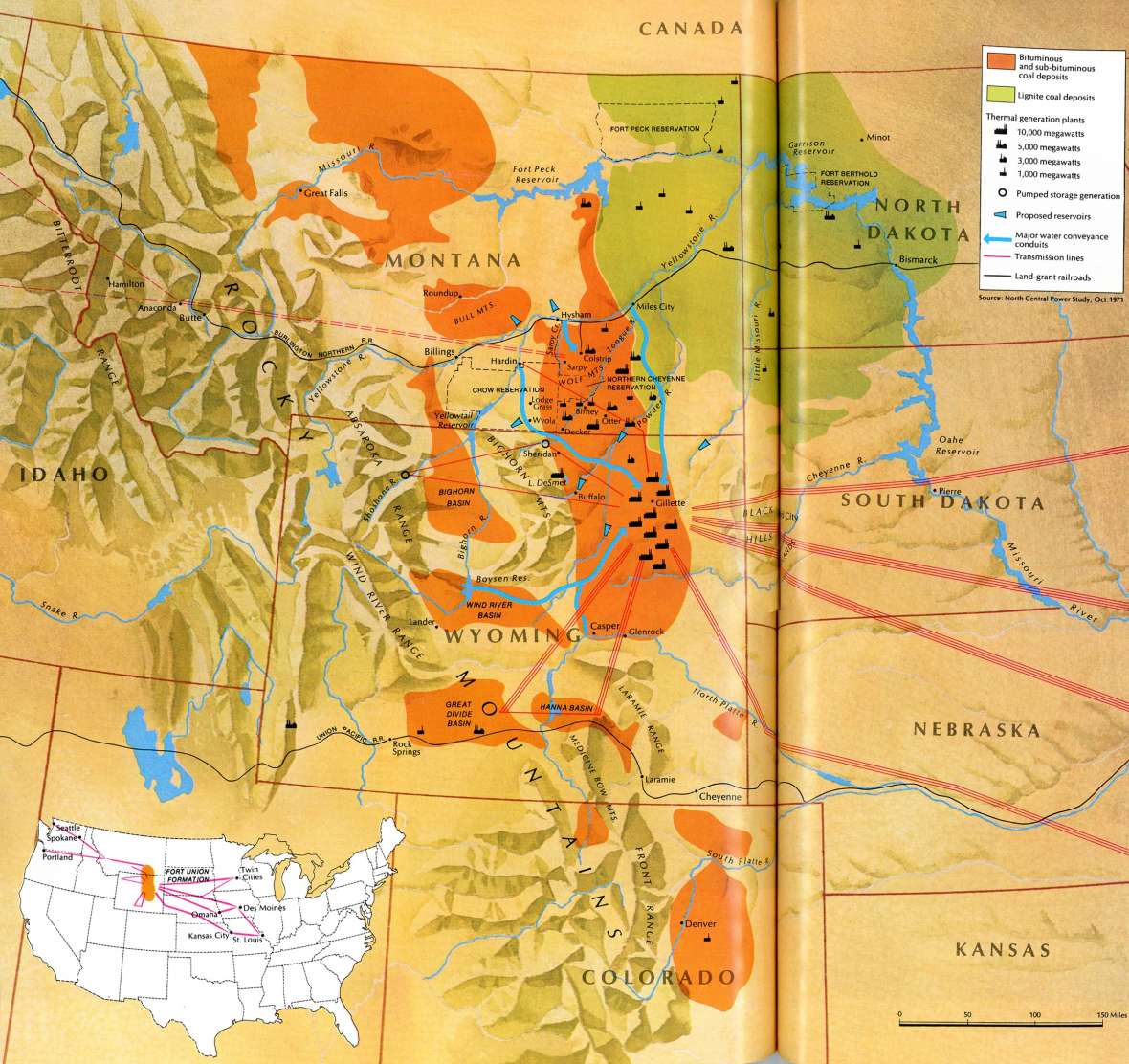
Move to Oregon
It turned out that Bell had something to lose after all. The 50-year-old man behind the legend was very human. He suffered from migraines and mercurial moods, twice over the years throwing the HCN layout sheets into the trash where his staff went to retrieve them. He also suffered from guilt about neglecting his family. He believed the world was going to hell, and his obligation was to move to Oregon where the climate lent itself to gardening, and he could better support his family.
When he walked out the door, he left his leadership role as well, unlike most founders of institutions. “Play with it until the string runs out,” he told his staff. He continued to contribute his “High Country” column, but he never tried to tell Joan Nice and Bruce Hamilton or subsequent staff how to edit or finance the newspaper.
Looking back, people involved in the Wyoming environmental movement at the time realize that the work took a heavy toll on many people, not just him. “We were a bunch of zealots, overdoing it,” in the words of one person. Working 60-70 hours a week for little or no pay, they acted as if they could save the world in their lifetimes. Relationships and physical health suffered. Constantly trying to raise money from the same people to fight crises destroyed friendships.
Evolution
Without Bell at the helm, the newspaper evolved into a more objective, less strident publication that focused on the environment. Bell had a fiery temper and made no attempt at objectivity, even testifying at public hearings on behalf of the readers. In Bell’s apoplectic newspaper, the sword of Damocles hung over the Clarks Fork River, sites for nuclear power plants and various other threatened areas.
Nice’s and Hamilton’s approach was different. They felt that if they laid out the facts, people would be convinced. “He was the right person to do it his way. Tom’s credentials as a native Wyomingite gave him credibility, but we were outsiders. We didn’t have the authority to speak for what Wyoming should do. Making it more objective was the only appropriate thing we could do,” Nice says.
Hamilton later left the High Country News to open a Sierra Club office in Lander. He and Nice were married and started having children and eventually left the state to work for the Sierra Club. By the time Nice left the HCN editorship in 1981, the newspaper circulation had increased to 9,000 and the paper continued to attract national attention as people such as Edward Abbey and Robert Redford visited Lander and spread the word about the paper.
Subsequent editors and financial managers continued the paper’s gradual progress toward stability, most notably converting it from a privately owned business owned by Tom Bell to nonprofit status so it could receive tax-deductible donations from individuals and foundations. In 1983, when Bell returned to Wyoming, editor Geoffrey O’Gara, the architect of this change, tried to ask Bell what he thought of the foundation. He had no interest in the details and just said, “Thanks for keeping it alive.”
In 1983, the board hired Ed and Betsy Marston to run the newspaper, and they moved it to Paonia, Colorado. High Country News had a truckload of files and photos and $7,000 in the bank, but the string never ran out and, in fact, the newspaper is thriving.
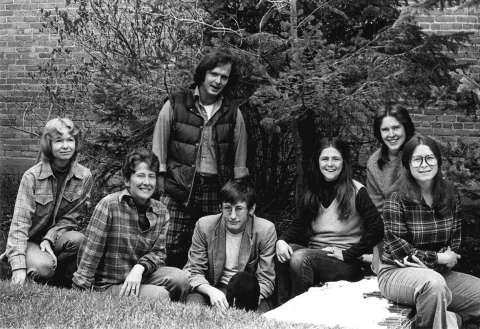
High Country News now has a budget of $3 million and more than 10 times as many paid subscribers as it had in 1974 (31,000). The website, which includes a full archive of back issues, attracts 360,000 unique visitors each month. The breadth of its coverage has continued to grow, reflecting the change in the tag line from “the environmental biweekly” to “for people who care about the West.” Bell’s other creation, the Wyoming Outdoor Council, has also thrived. Once struggling to support a half-time director, WOC now owns a building in Lander, has a staff of 12, and will celebrate its 50th anniversary in 2017.
Until his death in Lander Aug. 30, 2016, Bell continued to fight to protect the Oregon Trail and the Red Desert. In his 90s, he was still writing angry letters to lawmakers about climate change. “Most of us mellow with age, but not Tom,” says Keith Becker. “He didn’t know how to back up, and God bless him for it.”
Looking back
Wyoming conservationists were remarkably successful in the 1970s. Some of the victories could be attributed specifically to Tom Bell. For example, U.S. Rep. Teno Roncalio wrote to Bell in 1974 about the federal coal surface mining law saying, “written landowner consent remains in the bill, and you deserve credit for that.” He personally brought national attention that eliminated illegal fencing and protected the Red Desert that he loved.
However, Tom was at the helm of High Country News for only five of its 13 years in Wyoming and about one-tenth of its full life; HCN will turn 50 in 2019. In contrast, the current publisher, Paul Larmer, has been publisher for 13 years, and the previous publishers, Ed and Betsy Marston, were publishers for 19 years.
His impact should be measured by the environmental movement that he sparked. Told recently that he left in 1974, Leslie Petersen, one of the early staffers, was surprised. “He got us all started, and then he left.” Bart Koehler, who served as the Outdoor Council’s executive director after Becker, calls Bell the Paul Revere of Wyoming. “Just as Revere was a patriot for spreading the alarm, so was Tom.”
Wyoming conservationists blocked the biggest threats of the 1970s and convinced the legislature to address not only the environmental but also the social impacts of development, as Bell had envisioned. Most of the power plants and gasification plants were never built. The Green River was never sent across the Continental Divide. The nuclear fracking plan was abandoned. The slurry pipeline was never built. Near Dubois, the DuNoir was designated a special management area, which prevented clearcutting there, and the oversized timber mill was shut down.
In 1973, environmentalists helped convince the Wyoming Legislature to pass an Environmental Quality Act, which established a Department of Environmental Quality. In 1974, Koehler and others recruited constituents to demand an Industrial Siting and Information act, which was passed by the Legislature in 1975. Also that year, Gov. Hathaway was replaced by a moderate Democrat, Ed Herschler, who ran on the slogan, “Growth on our terms;” he served for three terms.
On the walls of their offices and the pages of their publications, Tom Bell is still a constant presence at both HCN and WOC, and the staffs feel a deep loyalty. Several of them drove hundreds of miles to attend the University of Wyoming ceremony in 2016 when Bell received an honorary doctorate in absentia. Later, after he died, two of the HCN staff, in Paonia, jumped in the car again to attend his memorial in Lander.
When Bell was on his deathbed in July 2016, Joan Nice Hamilton wrote to him and said, “Thanks for believing in us.” Although he had left for Oregon shortly after they arrived, “Tom's vision—letting people know about the threats to and the glories of the Rocky Mountain West—were still the heart of the endeavor,” she says. “He was the passion behind HCN; that passion and the loyal readers were the whole reason we were there. A bunch of kids starting a newspaper would not have been significant: A lot of newspapers came and went. This one lasted because of that voice in the wilderness.”
In September, Bell’s friend John Mionczynski of Atlantic City, Wyo. walked to the top of Oregon Buttes on the Red Desert to release his ashes. Bell’s legacy lives in the legions of people who carry on his work, including Mionczynski, whose work on behalf of the Red Desert was inspired by Bell.
Marjane Ambler was one of the editors of High Country News from 1974 until 1980. In 2013, she and Lander-based journalists Geoffrey O’Gara and Sara Wiles videotaped interviews with Tom Bell, which were sent to the American Heritage Center at the University of Wyoming in Laramie, Wyo. Bell also donated his personal papers to the center. Keith Becker continued ranching and working on behalf of the environment after his tenure as WOC executive director. Leslie Petersen was president of the WOC board in 1979, was Wyoming’s Democratic candidate for governor in 2010, and served as a Teton County commissioner. Bruce Hamilton is the deputy executive director of the Sierra Club. Joan Nice Hamilton was the editor of Sierra magazine for many years. Bart Koehler devoted over 40 years to working for wilderness.
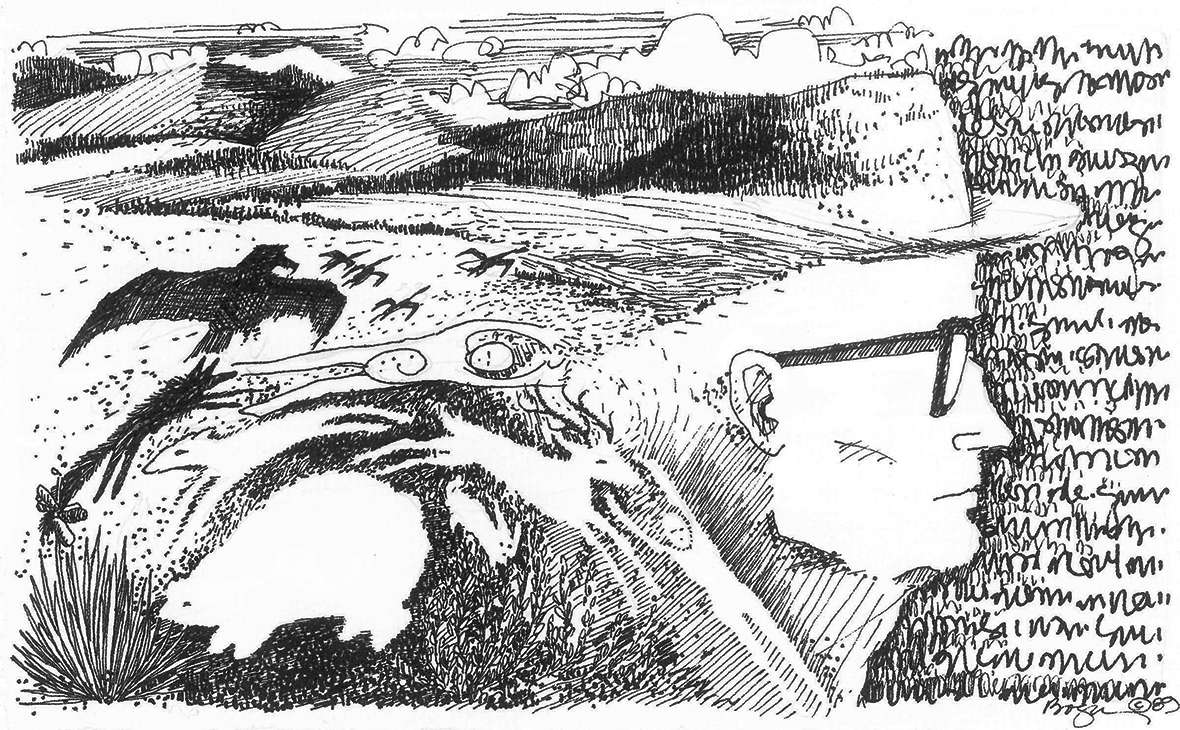
(Editor’s note: Publication of this and seven other articles on Wyoming newspapering is supported in part by the Wyoming Humanities Council and is part of the Pulitzer Prizes Centennial Campfires Initiative, a joint venture of the Pulitzer Prizes Board and the Federation of State Humanities Councils in celebration of the 2016 centennial of the prizes. The initiative seeks to illuminate the impact of journalism and the humanities on American life today, to imagine their future and to inspire new generations to consider the values represented by the body of Pulitzer Prize-winning work. For their generous support for the Campfires Initiative, the council thanks the Andrew W. Mellon Foundation, the Ford Foundation, Carnegie Corporation of New York, the John S. and James L. Knight Foundation, the Pulitzer Prizes Board, and Columbia University.)
Resources
Primary Sources
- Becker, Keith. Telephone interview with author, Sept. 24, 2016.
- Bell, Tom. Interview with Mark Junge. Lander, Wyo., April 5, 2014. Wyoming State Archives. Accessed Nov. 2, 2016 at http://wyospcr.state.wy.us/MultiMedia/Display.aspx?ID=130&icon=1.
- Bell, Tom. “We’re Alive and Well, Thank you.” High Country News 5:14 (July 6, 1973): 1-4.
- Hamilton, Bruce. “Bart Koehler, Environmental Advocate.” High Country News 6:10 (May 10, 1974): 16.
- Hamilton, Bruce. Telephone interview with author, Sept. 26, 2016.
- ______________. “Tom Bell: Visionary, Advocate, Mentor, Fighter, Friend.” September 8, 2016. Accessed Nov. 2, 2016 at http://www.sierraclub.org/sierra/green-life/tom-bell-visionary-advocate-mentor-fighter-friend.
- Hamilton, Joan Nice. Telephone interview with author, Sept. 26, 2016.
- Higley, Marge. “Thoughts from the Distaff Corner.” High Country News (16 March 1973): 14. Higley’s column includes the story about the choice between the boots and the newspaper.
- Koehler, Bart. Telephone interview with author, Sept. 26, 2016.
- Petersen, Leslie. Telephone interview with author, Sept. 23, 2016.
Secondary sources
- Josephy, Jr. Alvin M. “Agony of the Northern Plains: Impact on the Northern Plains of the 1971 ‘North Central Power Study.’” Audubon Magazine 75:4 (July 1, 1973): 68-99. Josephy’s article includes the map reproduced here.
- O’Gara, Geoffrey. “Saga of a High Country Newsman.” Sierra Magazine, (March/ April 1987): 72-77.
Illustrations
- The Mike McClure photos of Tom Bell and the High Country News staff, the image of the HCN front page from July 1973 and Kathy Bogan’s later illustration of Tom Bell are all from HCN files. Used with permission and thanks.
- The map accompanying Alvin Josephy’s article, “Agony of the Norhtern Plains,” cited above in more detail, ran in Audubon Magazine in July 1973. Used with thanks to the magazine and with special thanks to Bart Rea, who had a copy, and to Vince Crolla of the Casper College Western History Center, who prepared the scan.
